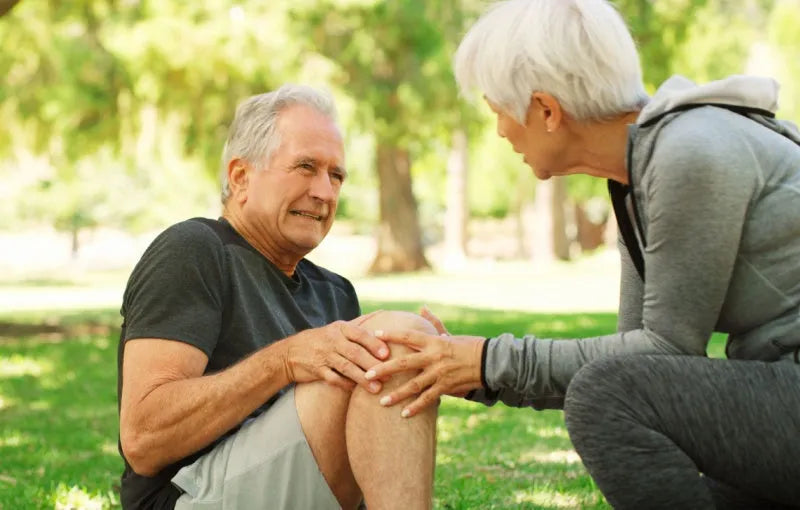
Friendly Tips for Relieving Knee Pain in Your Golden Years
Hey there! If you’re dealing with knee pain, you’re not alone. Whether it’s from years of wear and tear, an old injury, or just those pesky aches that come with getting older, knee pain can cramp your style. Luckily, there are some straightforward things you can do to feel better. Here are three friendly tips to help you ease that knee pain and get back to enjoying life:
Strengthen Your Knee Support Squad

Think of your knee like a car—it needs a solid support system to run smoothly. Strengthening the muscles around your knee can make a significant difference. Stronger muscles mean less strain on your joints, which can alleviate knee pain. Here are a few easy knee pain exercises to try:
- Straight Leg Raises: Lie down on your back, bend one knee, and keep the other leg straight. Lift the straight leg a few inches off the ground, hold for a few seconds, then lower it slowly. Do this 10-15 times for each leg. It’s a simple way to work those quad muscles and can help in knee pain relief.
- Wall Sits: Lean against a wall and slide down until you’re in a sitting position (but without a chair). Hold for 20-30 seconds, then push back up. It’s like sitting in an invisible chair, but it’s great for your quads and can assist in strengthening knee muscles.
- Step-Ups: Step up onto a low bench or step, then step down. Alternate legs. This is a good way to work both your quads and hamstrings, helping to keep everything stable and reduce joint pain over time.
Adding these exercises to your routine can help you feel more supported and reduce knee pain over time.
Stay Hydrated

Staying well-hydrated is essential for your joint health, including your knees. Water helps keep your joints lubricated, which can reduce pain and stiffness. Here’s why hydration is so important:
- Joint Lubrication: Water is a key component of synovial fluid, which cushions and lubricates your joints. Staying hydrated ensures that your joints stay flexible and move smoothly, which is crucial for natural joint health.
- Reduce Inflammation: Dehydration can lead to inflammation, which can worsen knee pain. Drinking enough water helps keep inflammation at bay.
- Support Overall Health: Hydration is crucial for your overall well-being. It aids in digestion, energy levels, and even weight management—all factors that can impact knee pain and joint health.
Make sure to drink plenty of water throughout the day to keep your joints in top shape and support hydration for joint health.
Practice Mindful Movement

Being mindful of how you move throughout your daily activities can help prevent unnecessary strain on your knees. Here are some tips to move more mindfully:
- Use Proper Techniques: When lifting objects, bend at your knees rather than your waist to avoid placing extra stress on your knee joints. This can prevent aggravating knee pain.
- Avoid Prolonged Sitting: Try to get up and move around every hour if you’re sitting for extended periods. This helps prevent stiffness and keeps your joints active.
- Engage in Low-Impact Activities: Activities like swimming or cycling are gentle on your knees while providing a good workout. They help maintain fitness without putting excessive strain on your joints, supporting joint pain management and knee pain solutions for adults.
Mindful movement practices can help protect your knees from further discomfort and support overall joint health.
Wrapping It Up
Knee pain can definitely be a hassle, but by strengthening the muscles around your knee, keeping an eye on your hydration, and using mindful movement techniques, you can find some relief and get back to feeling more like yourself. If you’re unsure about starting any new exercise or treatment, don’t hesitate to check in with your doctor. Here’s to happier, healthier knees.
